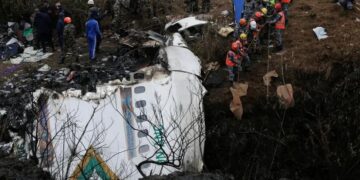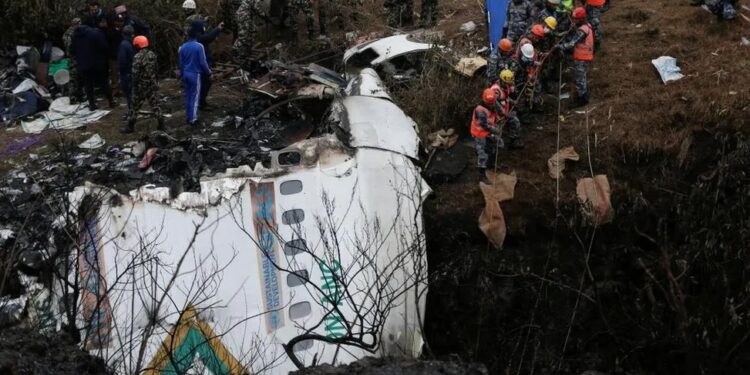By John Ikani
Government-appointed investigators have released a report indicating that the tragic plane crash in Nepal which claimed the lives of 72 people, including two infants was caused by an unintentional power cut by the pilots, resulting in an aerodynamic stall.
The ill-fated Yeti Airlines flight, en route from Kathmandu to Pokhara on January 15, marked the deadliest air incident in the country in three decades. The ATR 72 aircraft crashed just 1.5km from the airport in the Seti River gorge.
The flight crew, operating their third sector of the day, failed to recognize a crucial error.
Aeronautical engineer Dipak Prasad Bastola revealed that the pilots probably placed the condition levers, responsible for power control, in the feathering position instead of selecting the flap lever.
This led to the engines running idle, causing a loss of thrust.
“Due to its momentum, the aircraft flew for up to 49 seconds before hitting the ground,” explained Mr. Bastola, a member of the investigating panel.
The report emphasized the crew’s failure to identify and rectify the issue, despite alerts from the Crew Alerting Panel.
Contributing factors outlined in the report included inadequate technical and skill-based training, high workload, stress, and non-compliance with standard operating procedures.
Notably, the aircraft had been well-maintained with no known defects, and the cockpit crew was qualified according to Civil Aviation Authority of Nepal regulations.
International cooperation played a role in the investigation, with over a dozen investigators from the US, Canada, France, and Singapore participating.
Eyewitness Divya Dhakal described the horrifying scene as the plane plummeted from the sky. The crash site quickly became a hub of activity, with thick smoke billowing from the flames.
Prompt helicopter response was noted in the rescue efforts.
It’s worth noting that for the past ten years, the European Union has restricted Nepalese airlines from its airspace due to safety concerns.
Nepal has seen its share of aviation accidents, often attributed to remote runways and abrupt weather changes.
Last May, Yeti Airlines-owned Tara Air Flight 197 crashed into a mountainside, claiming the lives of 22 passengers and crew.


































